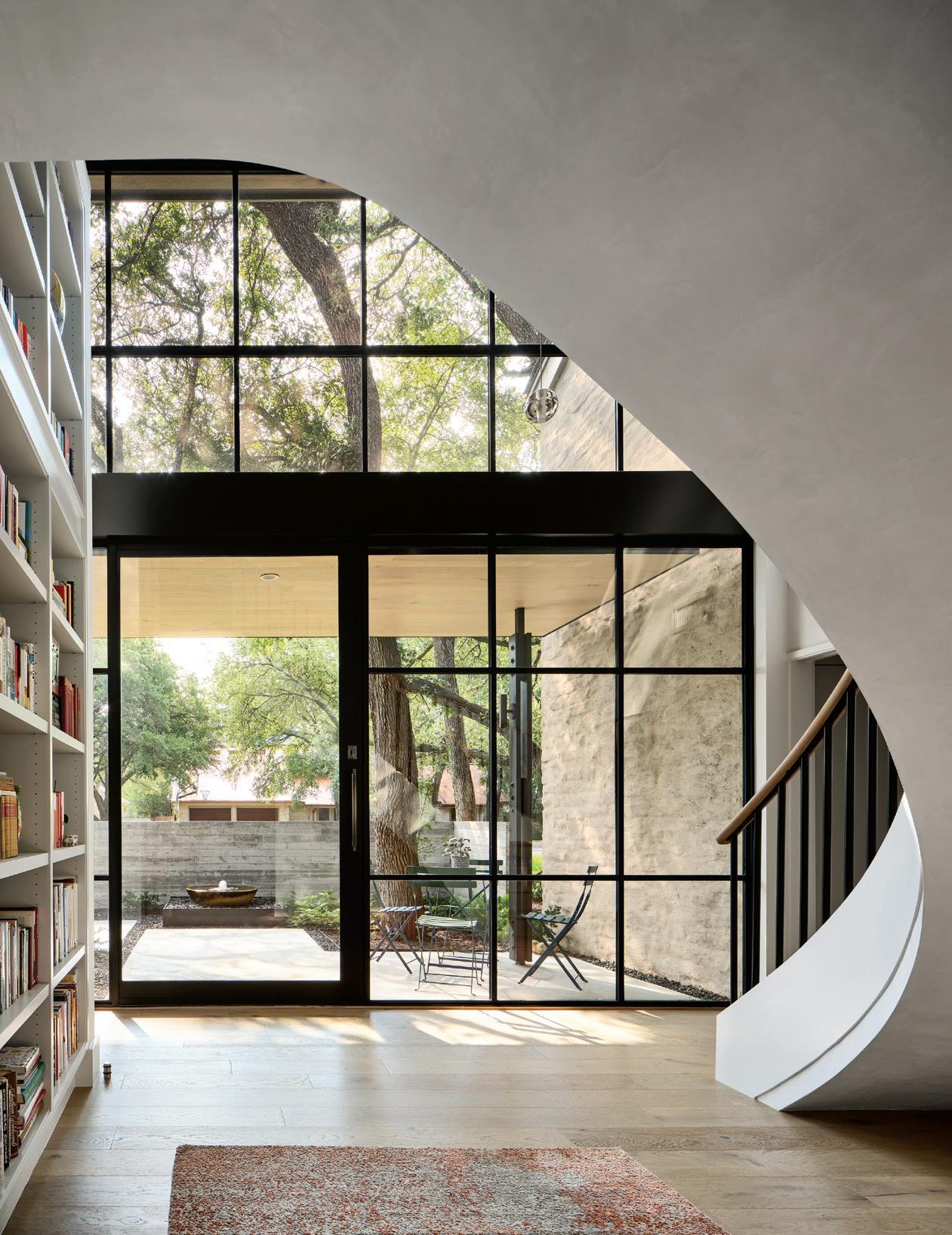
4 minute read
GARDENING
REPURPOSED POSSESSIONS FOR POTTED PLANTS
BY JOHN G. BLOODSWORTH
Advertisement
THE OLD ADAGE, “IF YOU CAN’T STAND THE HEAT, STAY OUT OF THE KITCHEN” CERTAINLY DOES NOT APPLY TO TRUE TEXAS GARDENERS. THE URGE TO DIG IN THE DIRT IS A PRIMAL INSTINCT. AND A LITTLE HEAT WON’T WILT THE WILL TO POT UP SOME BLOOMING BEGONIAS OR SUN-LOVING SUCCULENTS AND SAVOR THE BEAUTY OF NATURE’S CREATIONS.
Inspiration for bringing a little bit of nature and recycled relics into harmonious conversion came from spending summers with my maternal grandmother in Northeast Texas. The term hotter than blue blazes was surely coined for that far corner of the state that borders Arkansas, Oklahoma and Louisiana. The heat, humidity and storms that whip up out of thin air are legendary. So, the early mornings were for watering the flower garden and the evenings were for deadheading, pruning and selecting specimens that would fill repurposed possessions throughout my grandmother’s eclectic home. The heat of the day was for jumping in an old air-conditioned station wagon and hitting the vintage stores for garden ware.
An appreciation of well-worn objects — utilitarian items that were restored to lengthen their longevity — gain garden status when put to use as planters. Discarded metal colanders used for washing fruits and vegetables were lined with sphagnum moss and planted with summer herbs and greens. Holding court on a wooden kitchen table with fresh picked vegetables, a sprig was just a pinch away from adding zest to summer salads.
Resources are almost endless. Vintage items are found in flea markets, thrift stores and often in your own home. On a recent trek to uncover hidden treasures, fantastic finds sprouted up at a local charity thrift store. An assortment of rusted wire baskets was lined with sphagnum moss and filled with potting soil to serve as a succulent sanctuary for a sunny spot on the patio. A rusty industrial lampshade was turned upside down to hold succulents.
Tips For GROWING SUCCULENTS

Succulents make up a very large collection of plants identified as Sedum, Sempervivum, Echeveria, Aeonium and Crassula. Succulent plants are typically drought-resistant and have leaves, stems or roots that become unusually fleshy because they store water in their tissues. This gives us a hint to their care. Even though these hardy plants are drought-resistant, they do need a drink every once in a while. And in our Texas heat, more often than not.
When first planting your succulents, water them until the soil is damp. If your container has a hole for drainage, make sure it completely drains. If your container does not have a hole for drainage, such as old crockery pitchers and bowls, my method is to fill the container holding the succulent with water from the kitchen faucet. Turning the planter upside down over the kitchen sink, hold it with both hands while your fingers keep the soil (moss in the container is even better and holds in moisture) and the plant in place, allowing the excess water to completely drain from the plant. This gives the plant a thorough watering without drowning the roots, a major cause of houseplant demise.
Find a bright, sunny indoor spot or an outdoor setting that gets a few hours of sun. Remember that all succulents do not come from the same family and some may require more or less sun than others. Plants that aren’t getting enough sun will get leggy. Plants that are getting too much sun will get scorched leaves. And even the hardiest of succulents will have difficulty tolerating our 100-plus degree summers.
regions. For those with thumbs that are far from green, the plant de jour that almost guarantees success are air plants. These hardy specimens naturally grow on shady forest floors or attach to trees in tropical regions. With very little care, they can grow with no soil, little light and just an occasional misting. Perfect for small containers, vintage pot metal loving cups sprouting air plants are now prized possessions.
Found objects and garage sale finds are often put into service. A mismatched set of Mexican blown-glass drinking glasses was purchased for twenty-five cents apiece, a bargain for eight at $2 total. The drinking glasses were filled with potting soil holding orange marigolds, hot pink kalanchoe and bright orange goldfish plants picked up at the local nursery. Spanish moss covered the tops of the plantings. A table setting for a Fiesta-themed dinner party, the plants were repurposed to the garden to be enjoyed all summer long.
Once cherished heirlooms can become creative greenscapes. A vintage milk glass compote, dented silver goblets or a cracked crockery bowl planted with barrel cacti are conversation starters. It may not be your grandmother’s garden, but with vintage finds and bountiful blossoms to be found, you might create a little piece of repurposed paradise in your home. u

A rusty wok found at a garage sale holds a miniature garden of succulents nestled into the former cooking vessel. The wok sits on a wreath made of drift wood. Another cooking vessel that once served up heaping pots of pinto beans was turned into a vessel for a verdant crop of ornamental peppers.
A vintage wooden dough bowl was snatched up at a local auction along with a mix-matched array of kitchen utensils. Lined with Spanish moss and topped with an African seed pod found at a garden store, it now hosts a collection of Tillandsia — air plants — that are found growing on woody surfaces of other plants in sub-tropical









